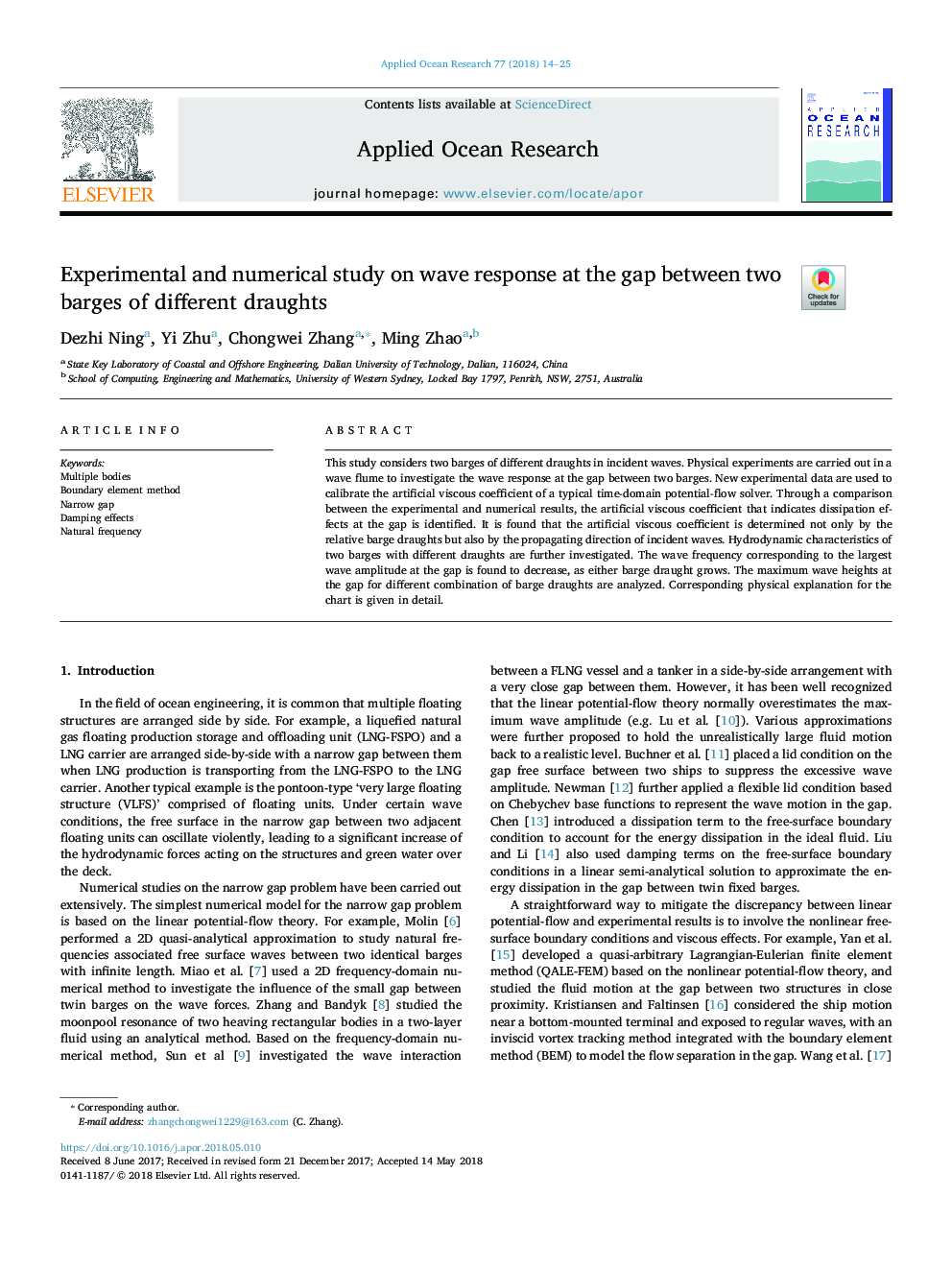| Article ID | Journal | Published Year | Pages | File Type |
|---|---|---|---|---|
| 8059226 | Applied Ocean Research | 2018 | 12 Pages |
Abstract
This study considers two barges of different draughts in incident waves. Physical experiments are carried out in a wave flume to investigate the wave response at the gap between two barges. New experimental data are used to calibrate the artificial viscous coefficient of a typical time-domain potential-flow solver. Through a comparison between the experimental and numerical results, the artificial viscous coefficient that indicates dissipation effects at the gap is identified. It is found that the artificial viscous coefficient is determined not only by the relative barge draughts but also by the propagating direction of incident waves. Hydrodynamic characteristics of two barges with different draughts are further investigated. The wave frequency corresponding to the largest wave amplitude at the gap is found to decrease, as either barge draught grows. The maximum wave heights at the gap for different combination of barge draughts are analyzed. Corresponding physical explanation for the chart is given in detail.
Related Topics
Physical Sciences and Engineering
Engineering
Ocean Engineering
Authors
Dezhi Ning, Yi Zhu, Chongwei Zhang, Ming Zhao,
